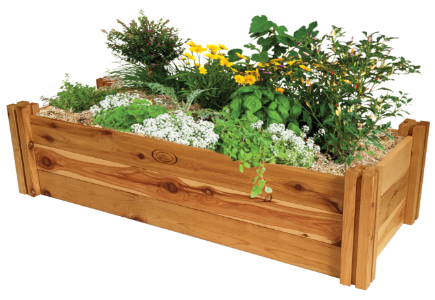Creating a raised garden bed is an excellent way to enhance your gardening experience. Not only does it provide better drainage and soil quality, but it also makes gardening more accessible. In this guide, we will explore the essential materials, dimensions, and tips for building your first raised garden bed.

Understanding the Basics of a Raised Garden Bed
A raised garden bed is essentially a garden plot that is elevated above the surrounding soil. This design allows for improved soil drainage and temperature control, which can lead to healthier plants. Have you ever wondered why so many gardeners prefer this method? The answer lies in its numerous benefits, including:
- Enhanced soil quality
- Reduced weed growth
- Improved pest control
- Ease of access for planting and harvesting
Choosing the Right Materials for Your Raised Garden Bed
When it comes to constructing a raised garden bed, selecting the right materials is crucial. Common materials include:
- Wood: Untreated cedar or redwood is ideal due to its natural resistance to rot.
- Metal: Galvanized steel is durable and can withstand the elements. For options, check out
 .
. - Concrete Blocks: These provide a sturdy structure and can be aesthetically pleasing.
- Bricks: A classic choice that offers both durability and style.
Each material has its pros and cons, so consider your budget, aesthetic preferences, and the climate in your area when making a decision.
Determining the Dimensions of Your Raised Garden Bed
The dimensions of your raised garden bed will depend on the space available and the types of plants you wish to grow. A common size is 4 feet by 8 feet, which allows easy access from all sides. However, you might consider:
- Height: 12 to 24 inches is ideal for most vegetables.
- Width: No more than 4 feet to ensure you can reach the center.
- Length: Can vary based on your available space.
Keep in mind that taller beds may require more soil, but they can also reduce strain on your back while gardening.
Expert Tips for Building Your First Raised Garden Bed
Once you have your materials and dimensions sorted, it’s time to build your raised garden bed. Here are some expert tips to ensure success:
- Ensure proper drainage by drilling holes in the bottom of wooden beds.
- Fill your bed with a mix of topsoil, compost, and organic matter for optimal growth.
- Consider using a landscape fabric at the bottom to prevent weeds while allowing water to drain.
By following these guidelines, you can create a thriving raised garden bed that will yield bountiful harvests for years to come.
Conclusion
Building a raised garden bed is a rewarding project that can enhance your gardening experience. With the right materials, dimensions, and expert tips, you can create a beautiful and productive garden space. So, why not start planning your raised garden bed today?













